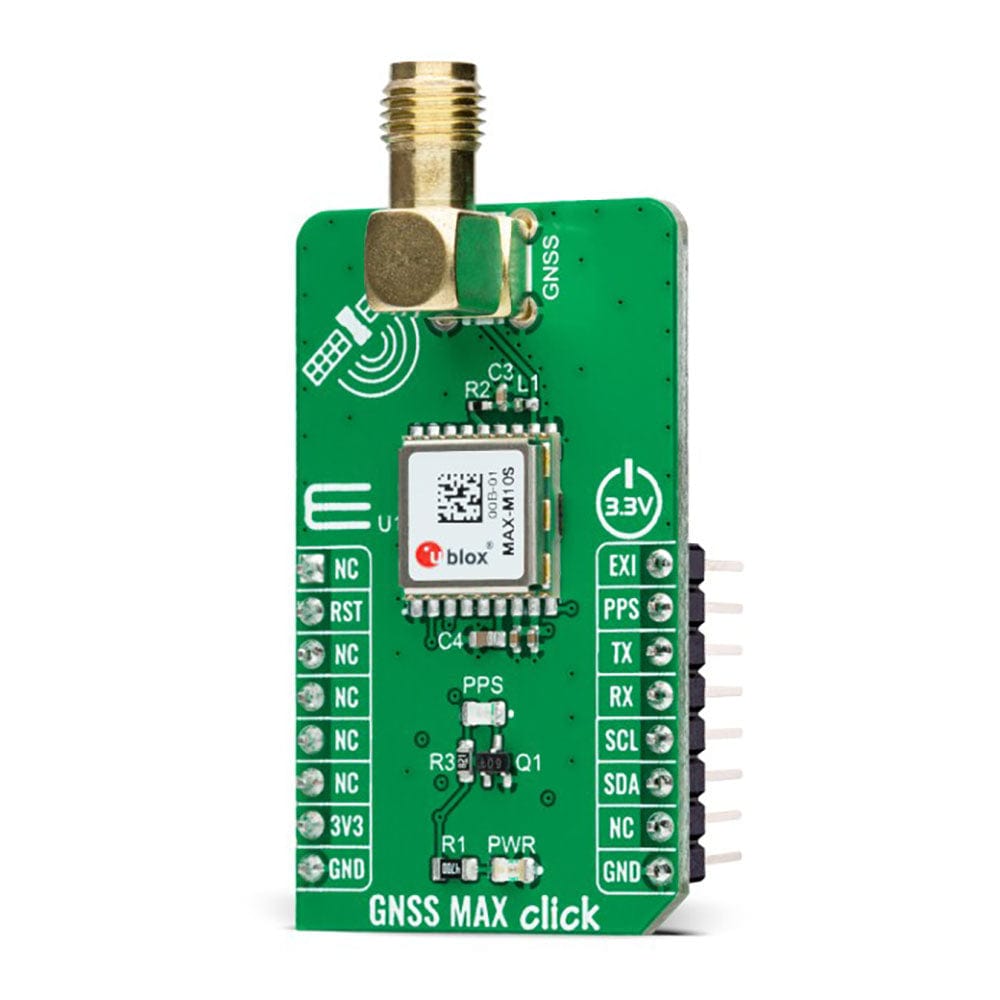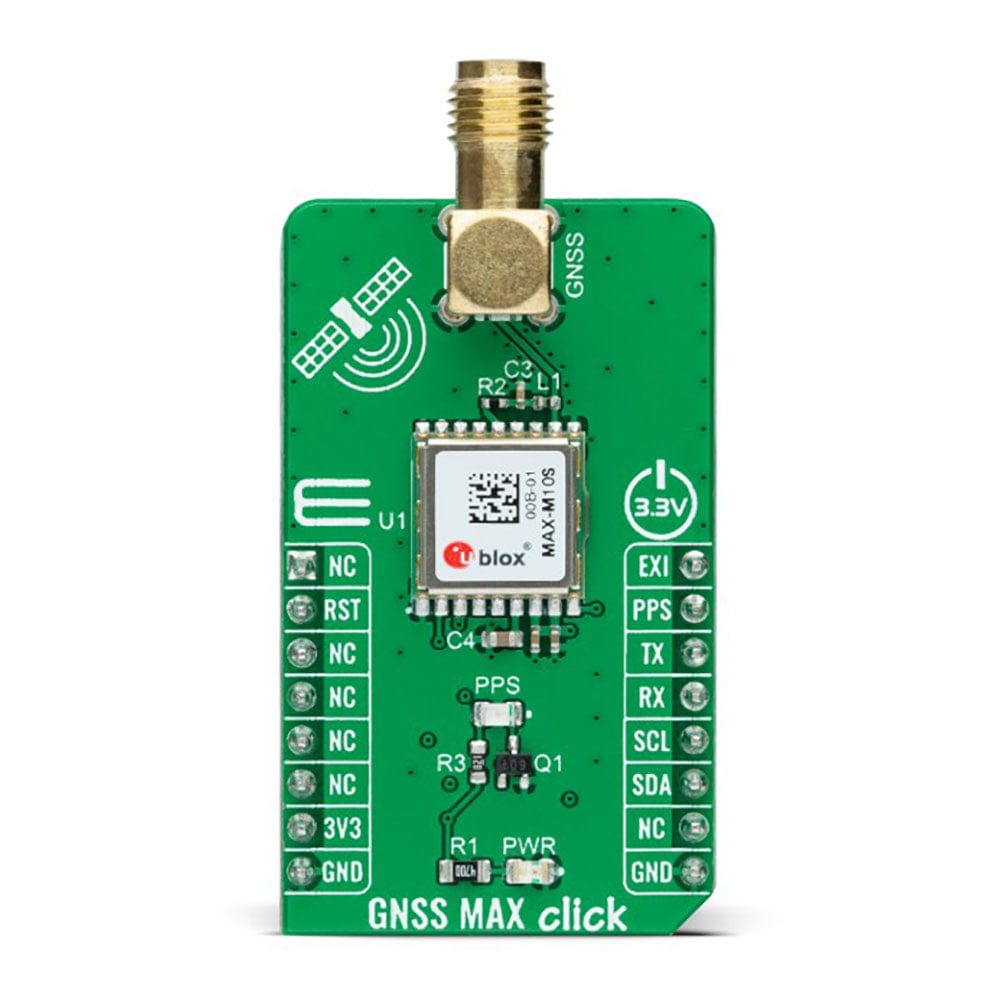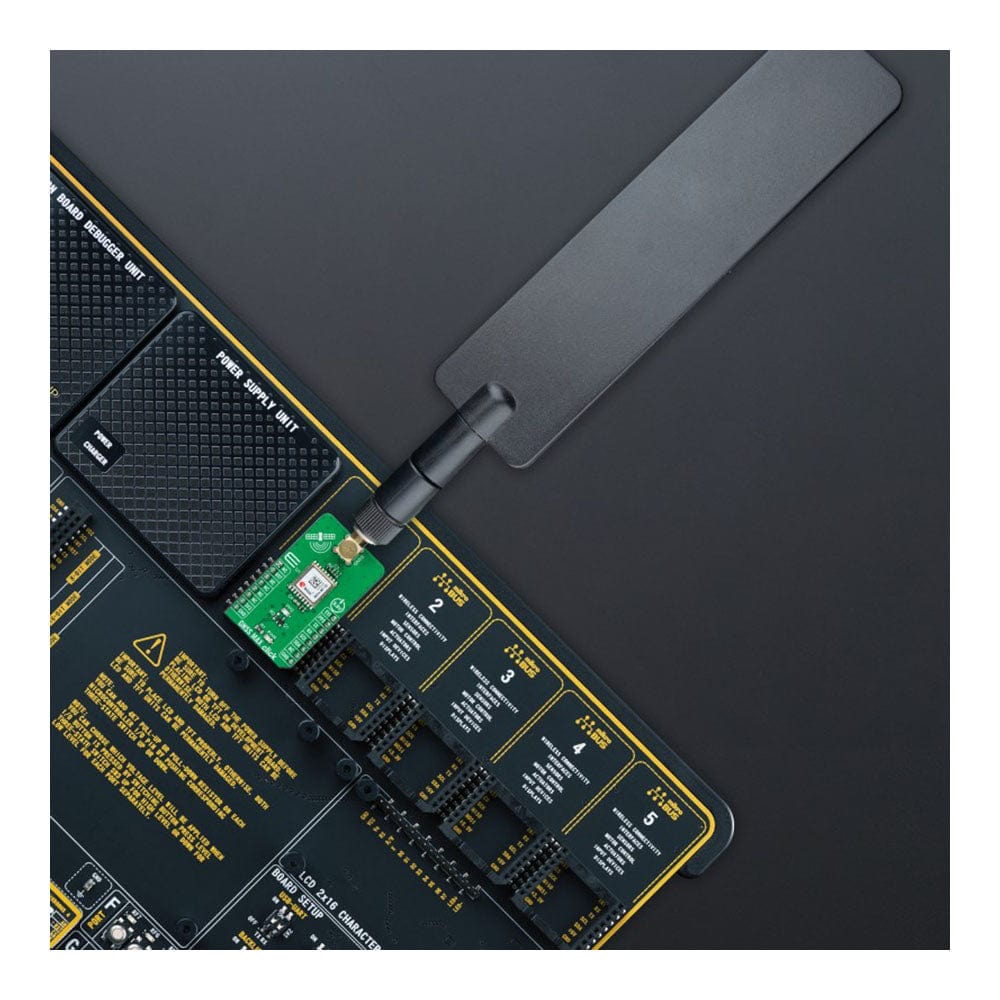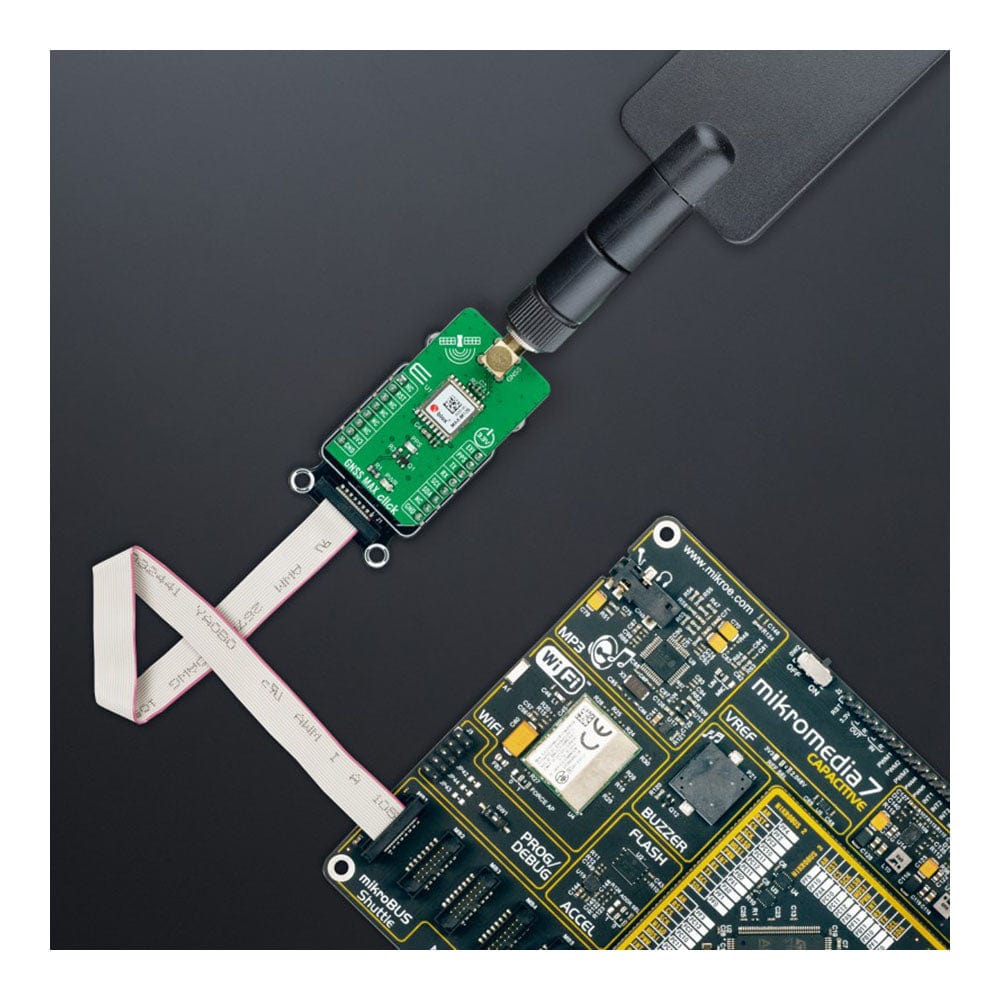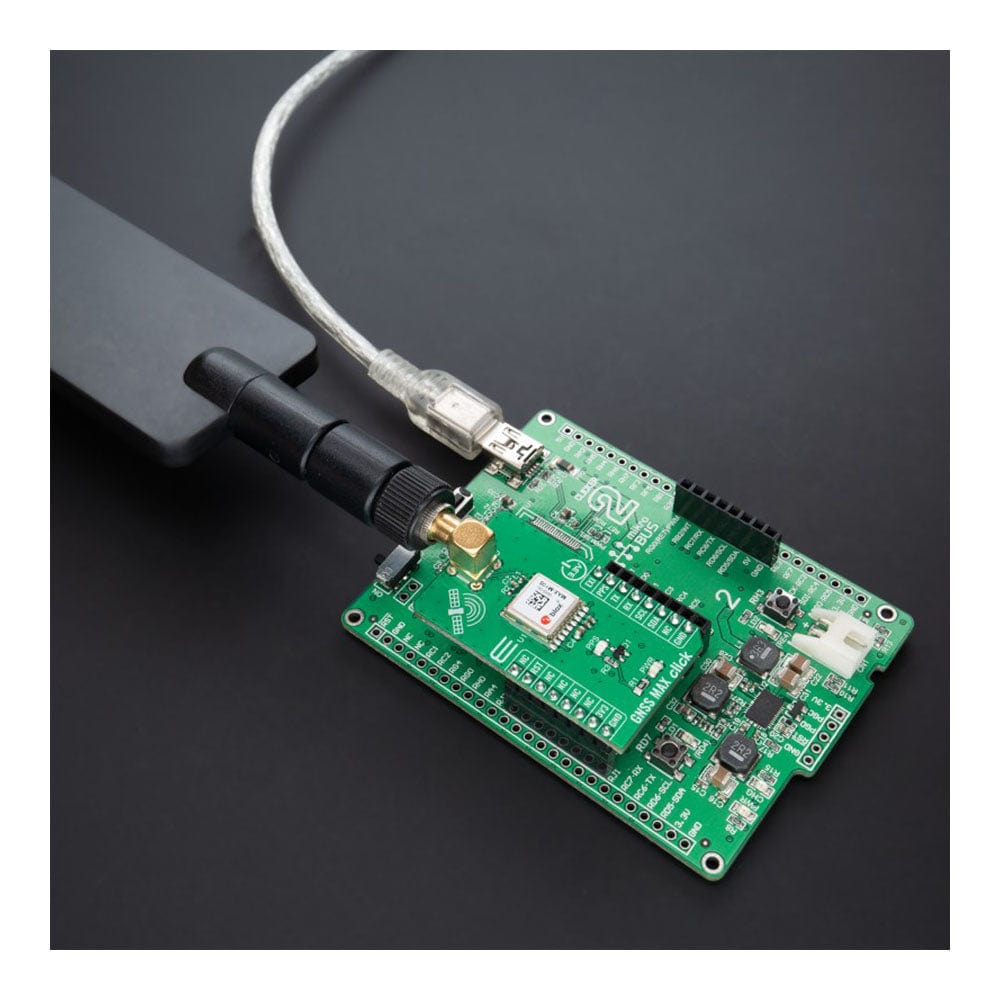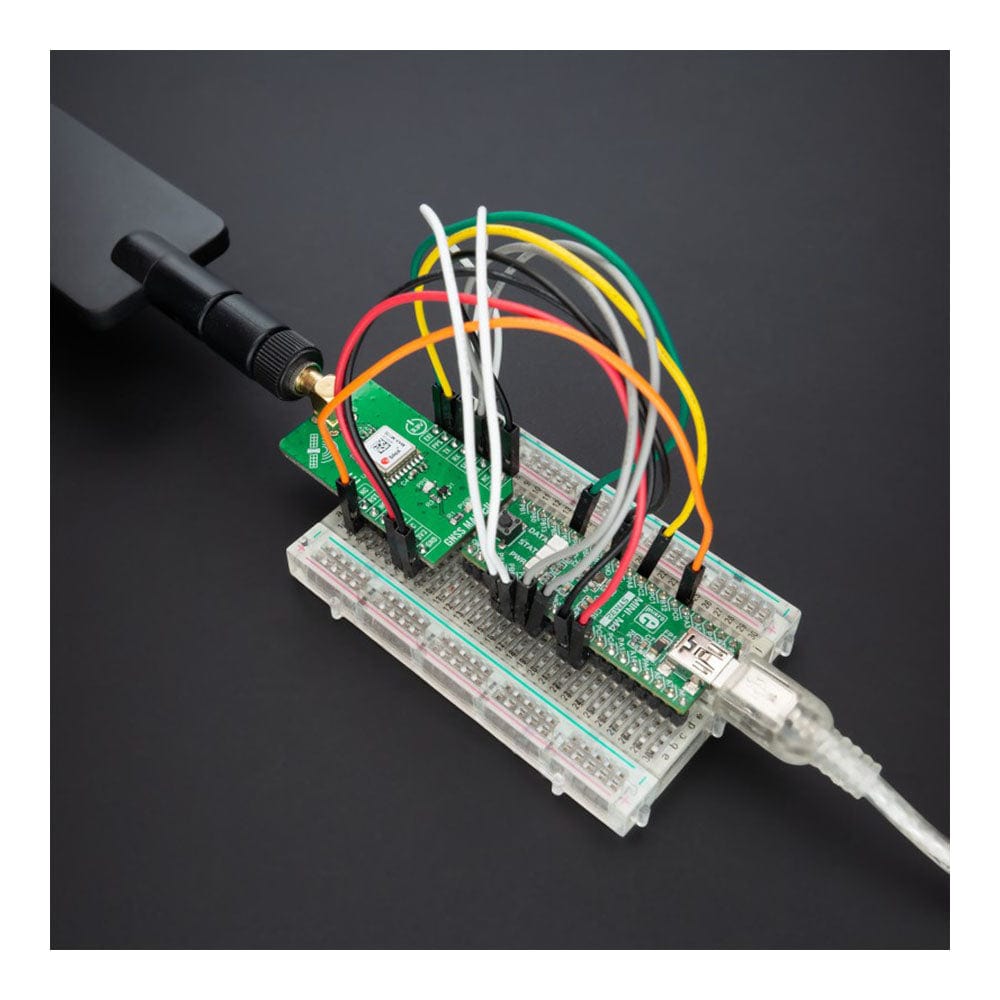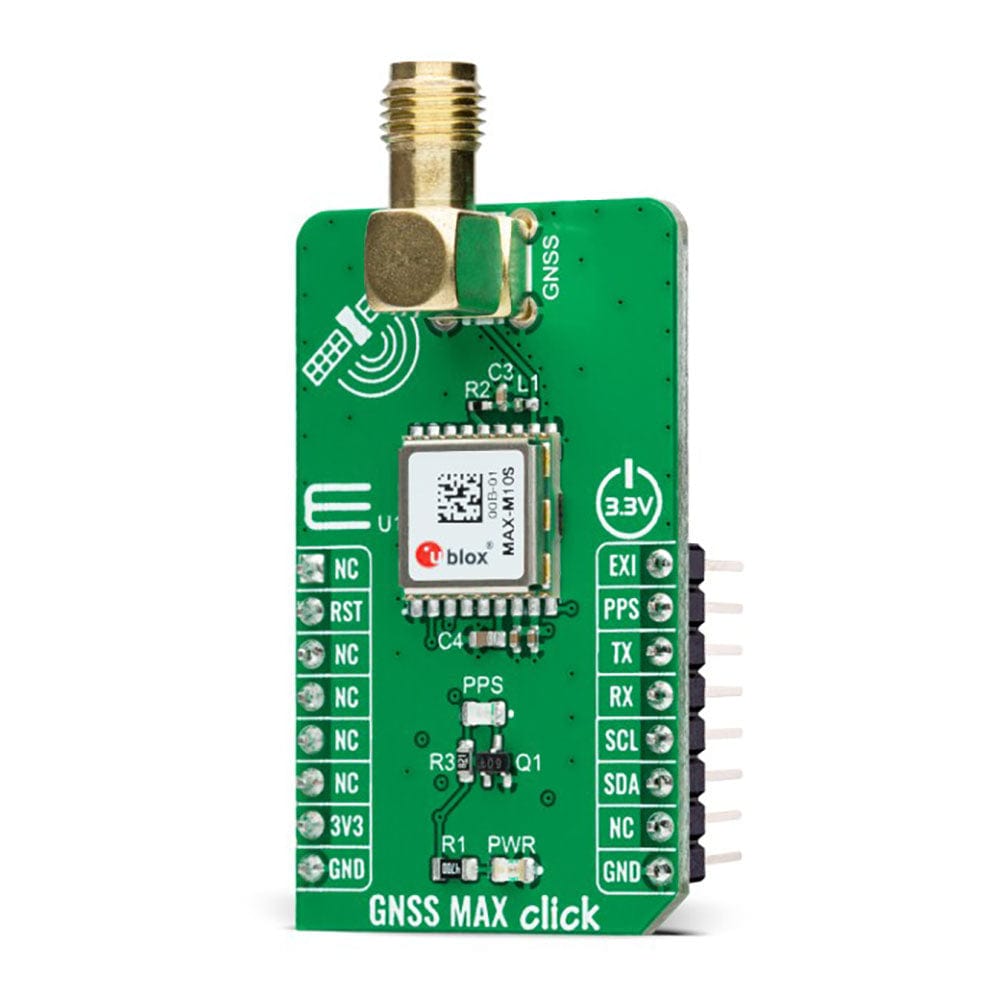
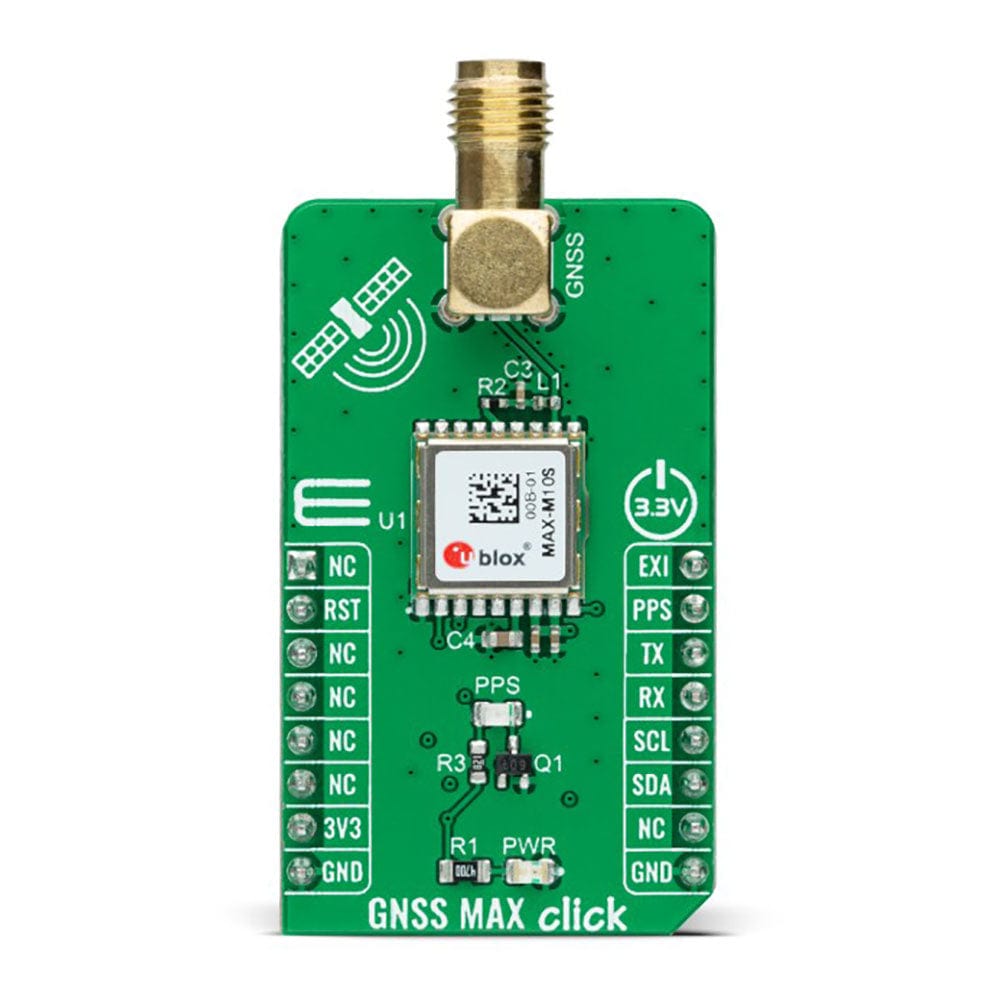
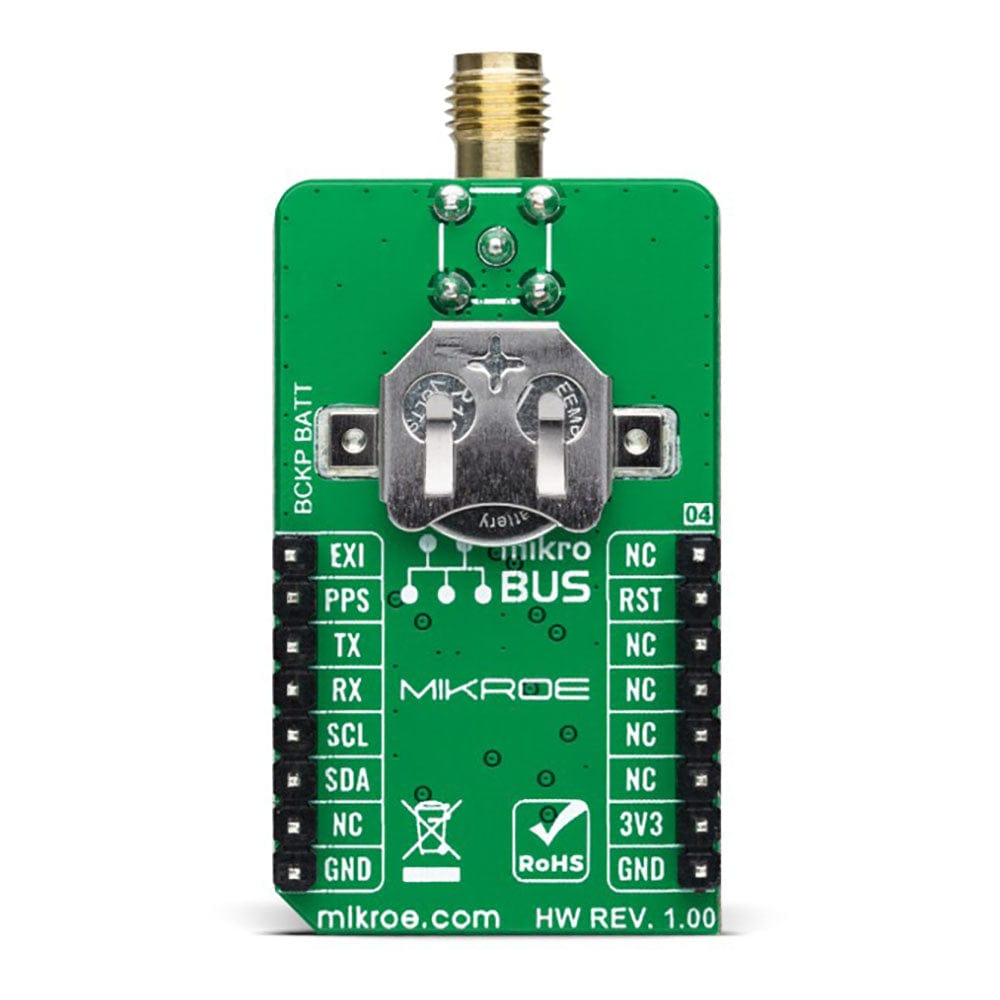
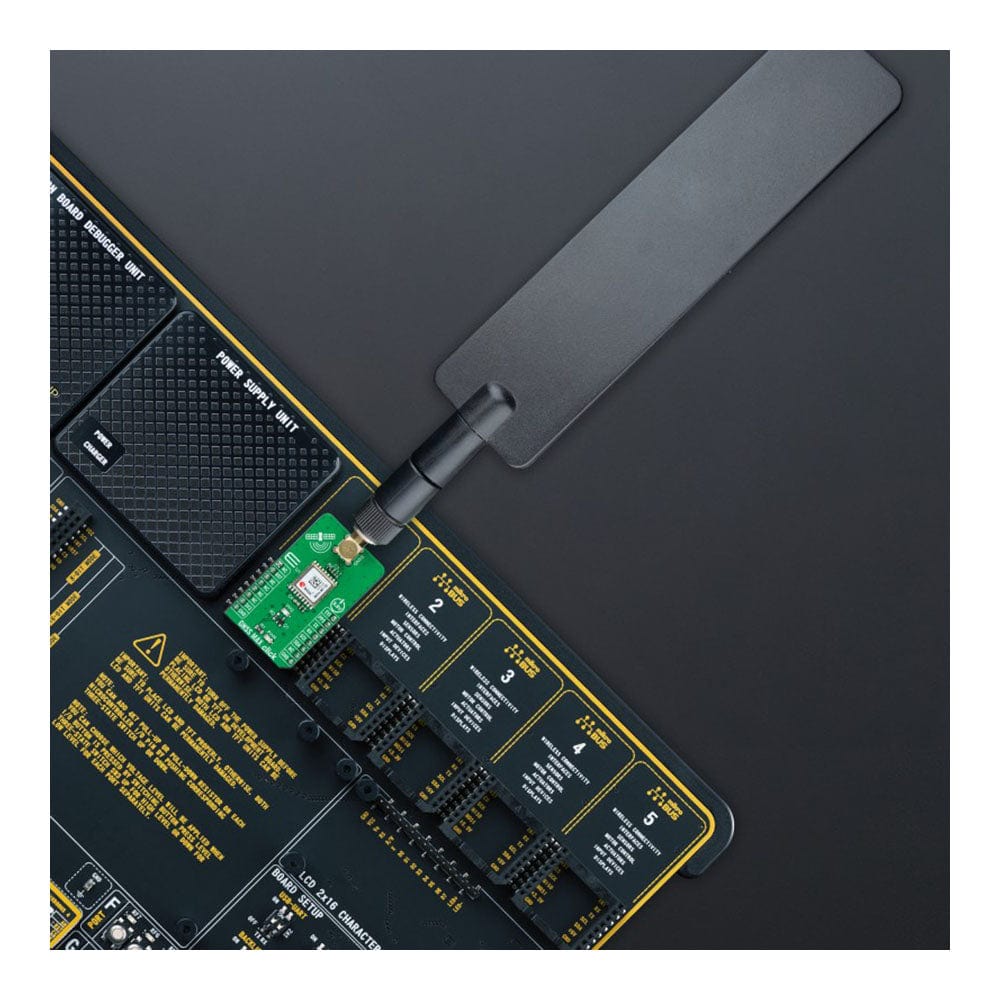
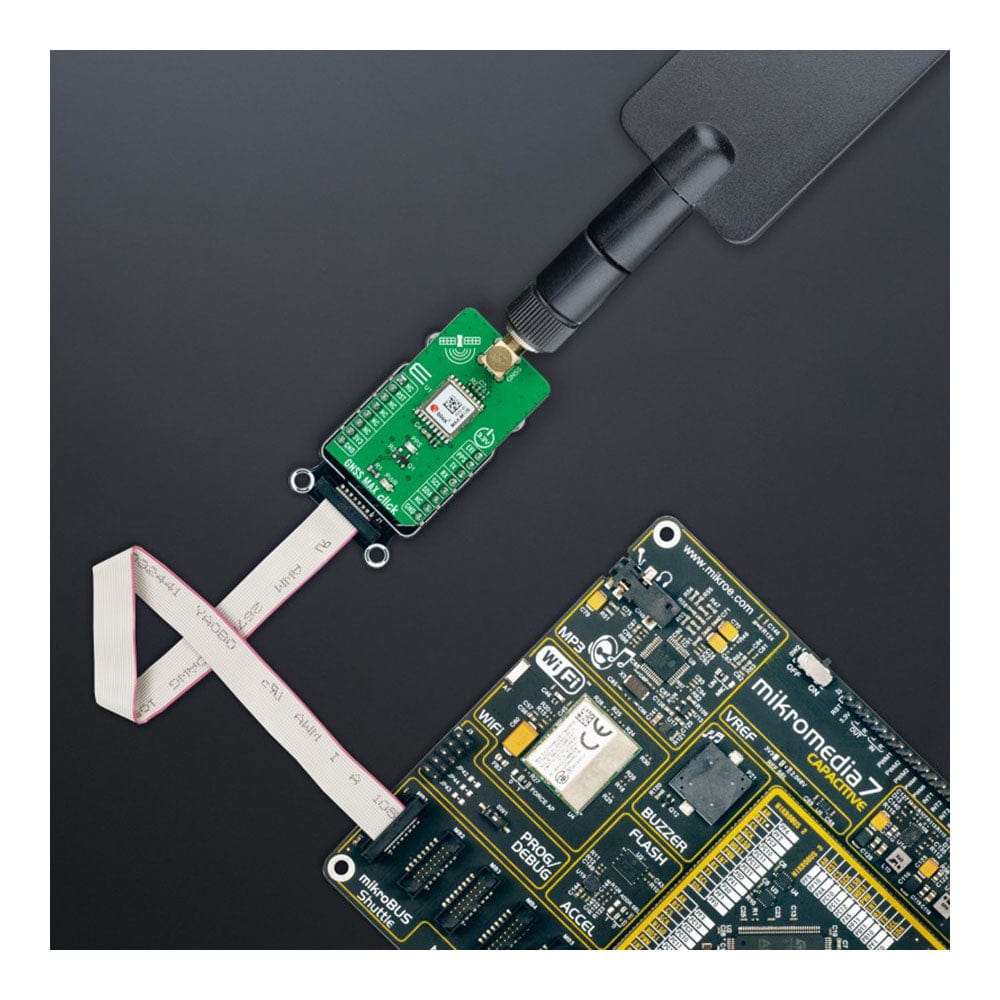
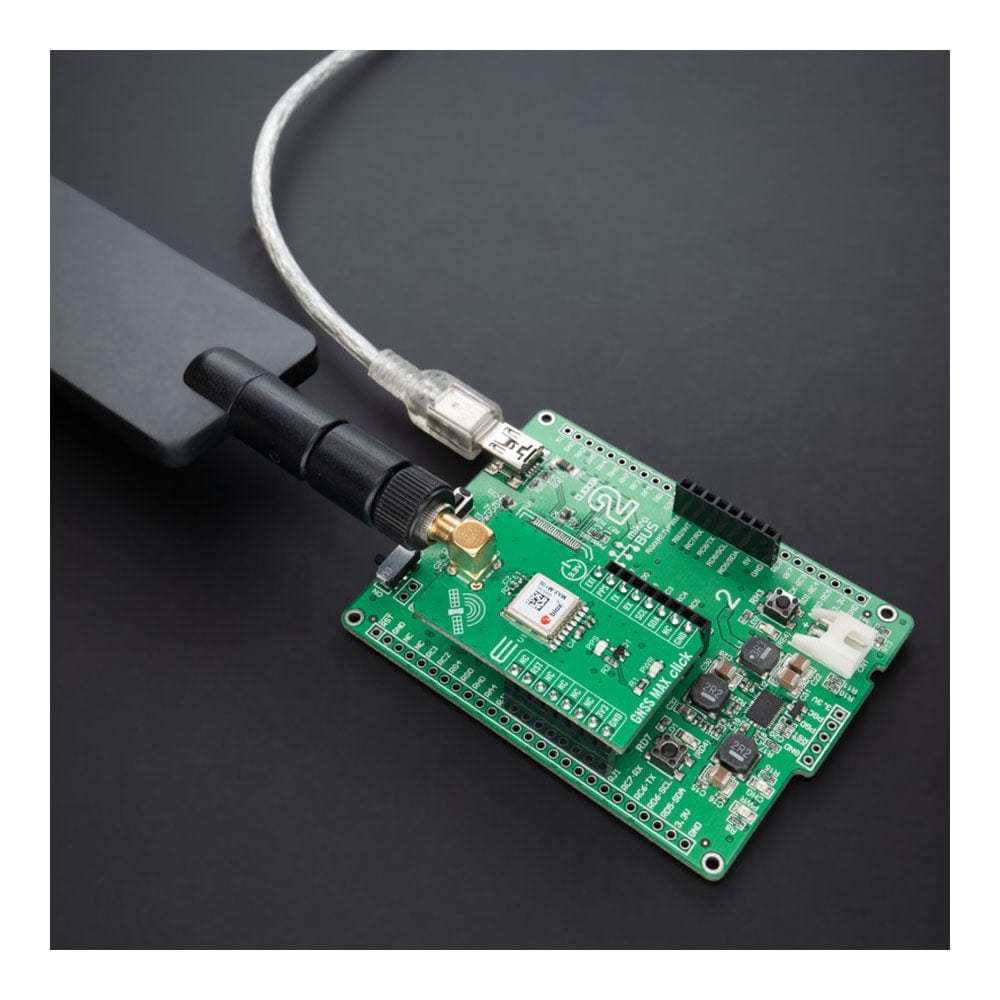
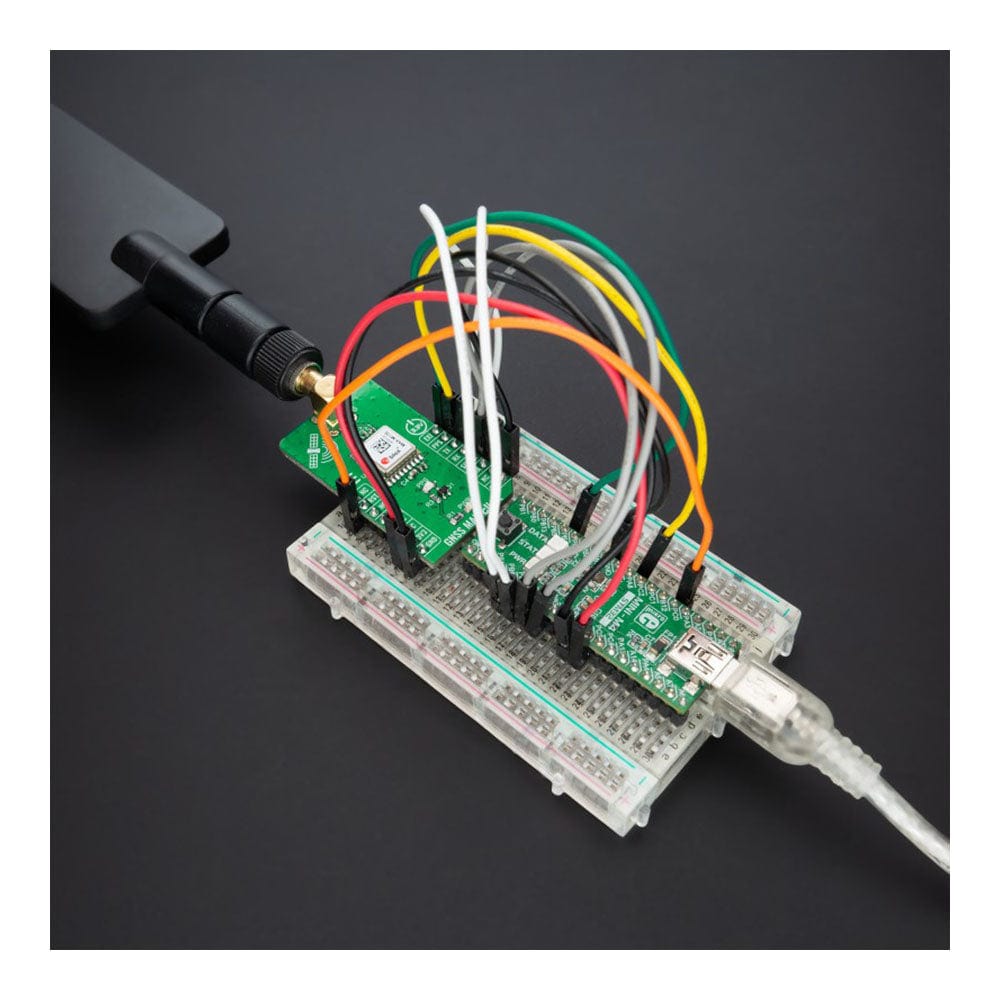
Overview
The GNSS MAX Click Board™ is a compact add-on board that provides fast positioning capability. This board features the MAX-M10S, an ultra-low-power GNSS receiver for high-performance asset-tracking from u-blox. The MAX-M10S supports the concurrent reception of four GNSS (GPS, GLONASS, Galileo, and BeiDou), which maximizes the position availability, particularly under challenging conditions such as in deep urban canyons. It is built on the u-blox M10 GNSS platform, which provides exceptional sensitivity and acquisition times for all L1 GNSS systems. It also comes with a configurable host interface, and advanced jamming and spoofing detection. This Click board™ is ideal for professional (industrial and consumer) applications such as asset trackers without compromising GNSS performance.
The GNSS MAX Click Board™ is supported by a mikroSDK compliant library, which includes functions that simplify software development. This Click board™ comes as a fully tested product, ready to be used on a system equipped with the mikroBUS™ socket.
Downloads
How Does The GNSS MAX Click Board™ Work?
The GNSS MAX Click Board™ is based on the MAX-M10S (MAX-M10S-00B-01), a high-performance GNSS module from u-blox. The MAX-M10S features the u-blox M10 standard precision GNSS platform and provides exceptional sensitivity and acquisition times for all L1 GNSS signals. It also supports concurrent reception of up to four GNSS (GPS, GLONASS, Galileo, and BeiDou), maximizing position availability, particularly under challenging conditions such as in deep urban canyons. The MAX-M10S offers high sensitivity and minimal acquisition times while maintaining low system power.
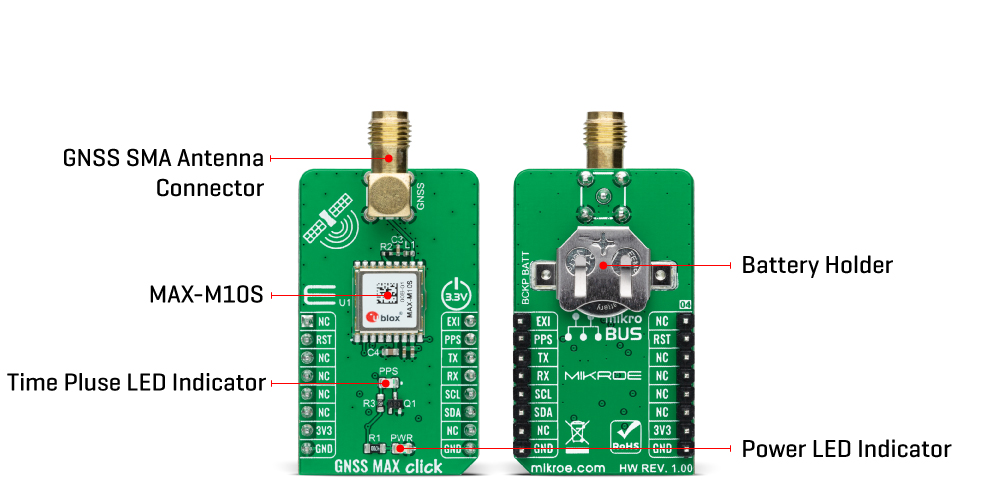
The MAX-M10S module integrates an LNA followed by a SAW filter in the RF path for maximum sensitivity. Also, it detects jamming and spoofing attempts and reports them to the host so that the system can react to such events. Advanced filtering algorithms mitigate the impact of RF interference and jamming, thus enabling the product to operate as intended. The u-blox Super-S technology offers great RF sensitivity that improves the dynamic position accuracy by up to 25% with small antennas or in a non-line-of-sight scenario.
The GNSS MAX Click Board™ comes with a configurable host interface that allows communication with MCU using the selected interface. The MAX-M10S can communicate with MCU using the UART interface with commonly used UART RX and TX pins as its default communication protocol operating at 9600bps to transmit and exchange data with the host MCU or using the I2C interface. I2C interface is compatible with the Fast-Mode allowing a maximum bit rate of 400kbit/s.
In addition to these features, it also uses several mikroBUS™ pins. An active-low reset signal routed on the RST pin of the mikroBUS™ socket activates a hardware reset of the system, while the EXT pin routed to the PWM pin on the mikroBUS™ socket represents an external interrupt used for the module Wake-Up function. It also uses a PPS signal routed on the INT pin of the mikroBUS™ socket alongside a blue LED indicator marked as STATUS used for time pulse signal information and indication.
The GNSS MAX Click Board™ possesses the SMA antenna connector on which an appropriate antenna connects that MikroE has in its offer for improved range and received signal strength. Also, in the case of the primary supply failure, the module can use a backup supply voltage from a connected battery if you need the Click board™ to be a standalone device.
The GNSS MAX Click Board™ can be operated only with a 3.3V logic voltage level. The board must perform appropriate logic voltage level conversion before using MCUs with different logic levels. However, the Click board™ comes equipped with a library containing functions and an example code that can be used, as a reference, for further development.
SPECIFICATIONS
| Type | GPS/GNSS |
| Applications | Can be used for professional (industrial and consumer) applications such as asset trackers |
| On-board modules | MAX-M10S - standard precision GNSS module from u-blox |
| Key Features | Low power consumption, maximum position availability with concurrent reception of 4 GNSS, proven excellent performance, advanced jamming and spoofing detection, selectable interface, and more |
| Interface | I2C,UART |
| Compatibility | mikroBUS |
| Click board size | M (42.9 x 25.4 mm) |
| Input Voltage | 3.3V |
PINOUT DIAGRAM
This table shows how the pinout on GNSS MAX Click Board™ corresponds to the pinout on the mikroBUS™ socket (the latter shown in the two middle columns).
| Notes | Pin |  |
Pin | Notes | |||
|---|---|---|---|---|---|---|---|
| NC | 1 | AN | PWM | 16 | EXI | Wake-Up Interrupt | |
| Reset | RST | 2 | RST | INT | 15 | PPS | Time Pulse Signal |
| NC | 3 | CS | RX | 14 | TX | UART TX | |
| NC | 4 | SCK | TX | 13 | RX | UART RX | |
| NC | 5 | MISO | SCL | 12 | SCL | I2C Clock | |
| NC | 6 | MOSI | SDA | 11 | SDA | I2C Data | |
| Power Supply | 3.3V | 7 | 3.3V | 5V | 10 | NC | |
| Ground | GND | 8 | GND | GND | 9 | GND | Ground |
ONBOARD SETTINGS AND INDICATORS
| Label | Name | Default | Description |
|---|---|---|---|
| LD1 | PWR | - | Power LED Indicator |
| LD2 | PPS | - | Time Pulse LED Indicator |
GNSS MAX CLICK ELECTRICAL SPECIFICATIONS
| Description | Min | Typ | Max | Unit |
|---|---|---|---|---|
| Supply Voltage | - | 3.3 | - | V |
| Horizontal Position Accuracy | - | 1.5 | - | m |
| Tracking & Navigation Sensitivity | - | -167 | - | dBm |
| Operating Temperature Range | -40 | +25 | +85 | °C |
| General Information | |
|---|---|
Part Number (SKU) |
MIKROE-4643
|
Manufacturer |
|
| Physical and Mechanical | |
Weight |
0.02 kg
|
| Other | |
Country of Origin |
|
HS Code Customs Tariff code
|
|
EAN |
8606027382604
|
Warranty |
|
Frequently Asked Questions
Have a Question?
Be the first to ask a question about this.

